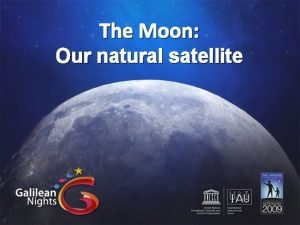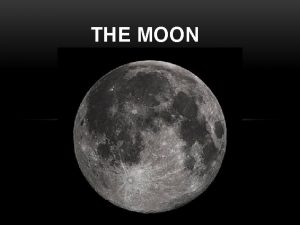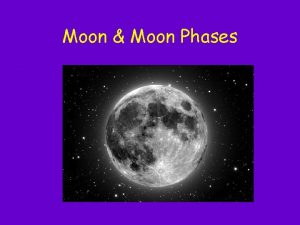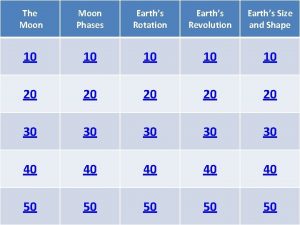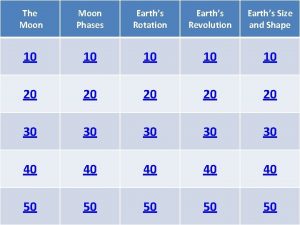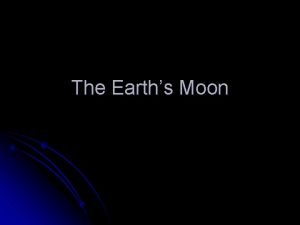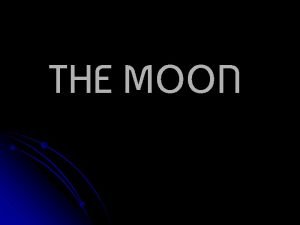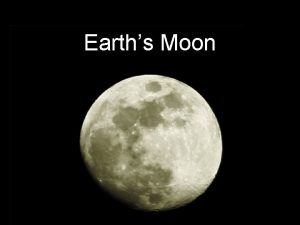Earths Moon Chapter 16 4 Part 1 Moon








- Slides: 8

Earth’s Moon Chapter 16 – 4 Part 1

Moon Facts • • • Name - Luna Gravity : 17% of Earth Revolution: 27 days 8 hours Rotation: 27 days 8 hours Because the period of revolution equals the period of rotation, the same side of the moon always faces earth.

Surface of the Moon • Oldest rocks are 4. 6 billion years old, same as the Earth • Almost no atmosphere and no erosion • Complete history of impact craters • Temperature: -170 to 134 degrees C

Origin of the Moon • Moon rocks are the same age as the Earth • Formation of the moon happened at or near the formation of the Earth • Possibly a large body collided with Earth and ejected some of the mantle into space which formed the moon

Moonlight • The moon does not generate energy that can be emitted as light. • Like the planets and other bodies in our solar system, it reflects light from the sun.

Phases of the Moon • As the moon revolves around the Earth, the amount of sunlight on the side of the moon that faces the Earth changes. • The different appearances of the moon due to its changing position are called phases. • When the moon is waxing, the sunlit fraction that we can see from the Earth is getting larger. • When the moon is waning, the sunlit fraction is getting smaller.

The Solar Eclipse • A solar eclipse happens when the moon comes between the Earth and the sun. • An annular solar eclipse happens when the moon does not completely cover the disk of the sun. • During a total solar eclipse, the disk of the moon completely covers the sun.

The Lunar Eclipse When sunlight hits the particles in the Earth’s atmosphere, blue light is filtered out. As a result, most of the remaining light that reflects off the moon is red.
 Whats earths moon called
Whats earths moon called Whats earths moon called
Whats earths moon called Whats the name of earths moon
Whats the name of earths moon Which moon phase occurs directly before a new moon
Which moon phase occurs directly before a new moon Which moon phase occurs directly before a new moon
Which moon phase occurs directly before a new moon Moon sister moon calendar
Moon sister moon calendar Home.hiwaay.net/ krcool/astro/moon/moon tides/
Home.hiwaay.net/ krcool/astro/moon/moon tides/ How many days for a moon cycle
How many days for a moon cycle The earth's layers foldable
The earth's layers foldable





